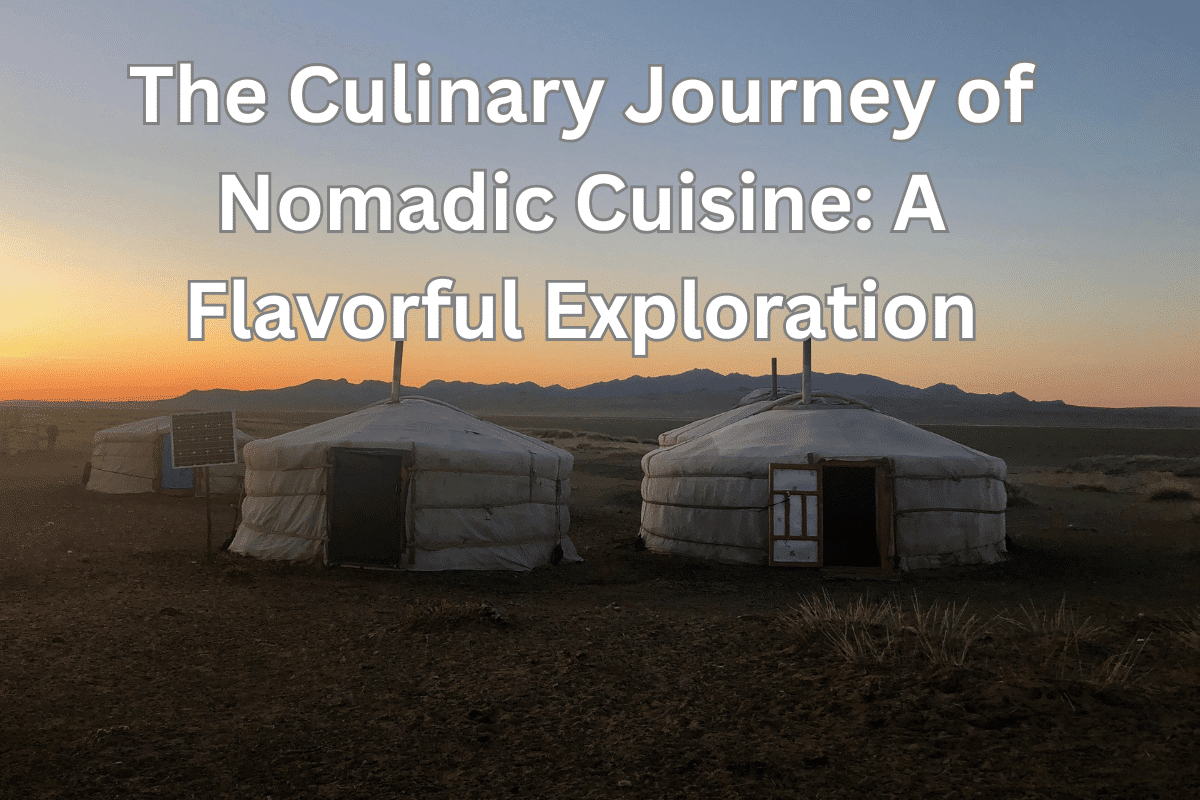Imagine a kitchen with no walls, a pantry that stretches across continents, and recipes passed down not through cookbooks, but through generations of journeys.
What if I told you that some of the most enduring and innovative culinary traditions in the world were born not in settled civilizations, but on the move? Get ready to uncover the secrets of nomadic cuisine—a story of flavor, resilience, and ingenuity that’s as old as humanity itself.
Table of Contents
- The Essence of Nomadic Life
- A Culinary Tradition on the Move
- Cooking in a Ger: A Personal Experience
- The Global Influence of Nomadic Cuisine
- The Resilience of Nomadic Cuisine
- A Culinary Journey Worth Exploring
- Deep Dive Podcast
- Related Questions
The Essence of Nomadic Life
Nomadic cultures have existed for thousands of years, adapting to the rhythms of nature and the landscapes they traverse. These communities often rely on the resources available in their environment, creating dishes that reflect their surroundings and lifestyles.
From the Mongolian steppes to the deserts of the Middle East, nomadic cuisine is characterized by its practicality and creativity.
When I had the opportunity to live in a Ger (yurt) in Mongolia, I was profoundly impressed by how my host family prepared delicious meals in such a makeshift setting. Their kitchen was a humble space, yet it was filled with warmth, love, and the aroma of traditional dishes that told stories of their heritage.
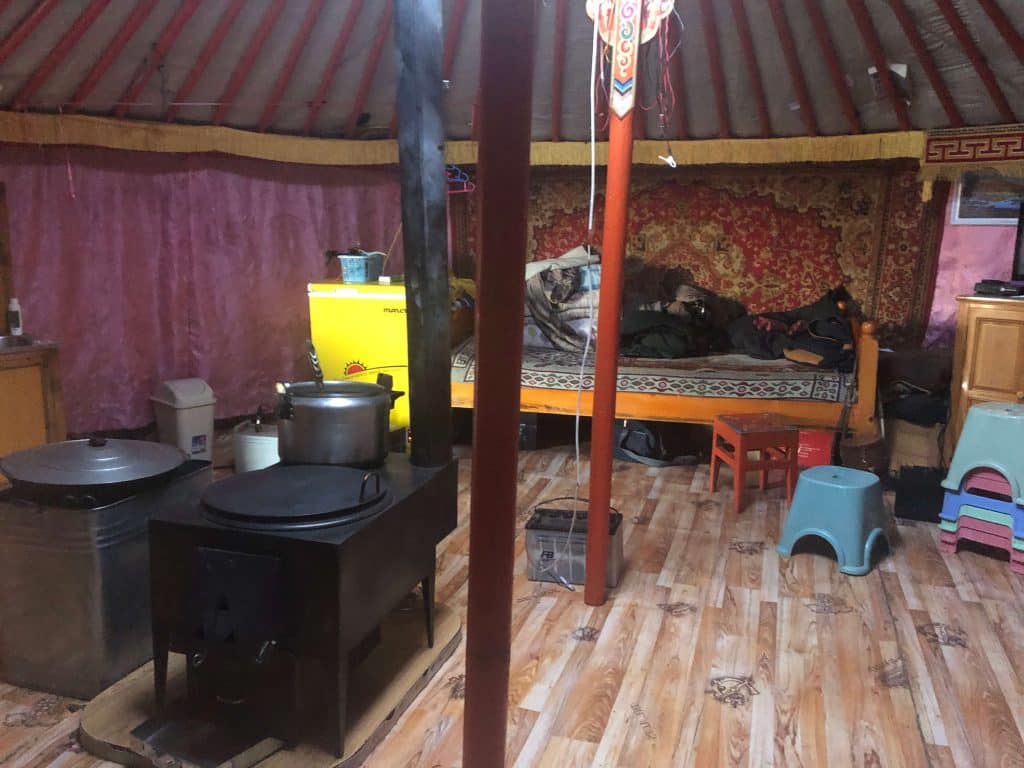
A Culinary Tradition on the Move
Nomadic cuisine is not just about sustenance; it is a reflection of a way of life. The dishes created by nomadic peoples often utilize simple ingredients that can be easily transported and preserved. This adaptability has allowed these culinary traditions to flourish despite the challenges of mobility.
Ingredients of Nomadic Cuisine
- Meat and Dairy: Central to many nomadic diets are meat and dairy products. In Mongolia, for example, sheep, goats, and horses are common sources of protein. The milk from these animals is often transformed into various dairy products, such as yogurt, cheese, and fermented drinks. My host family served me airag, a traditional fermented mare’s milk, which was both refreshing and slightly tangy.
- Grains and Carbohydrates: Grains like barley and wheat often play a significant role in nomadic diets. Bread is a staple, with recipes varying from flatbreads to more complex baked goods. During my stay, I tasted boortsog, a deep-fried dough that was incredibly light and fluffy, often enjoyed with tea.
- Wild Foraged Foods: Nomadic peoples have a deep understanding of their environment, often foraging for wild herbs, berries, and roots that add unique flavors to their dishes. This connection to nature not only enriches their cuisine but also reflects their respect for the land.
- Preservation Techniques: Given the transient nature of nomadic life, preservation methods such as drying, smoking, and fermenting are crucial. These techniques ensure that food can be stored for long periods, allowing families to sustain themselves during long journeys.
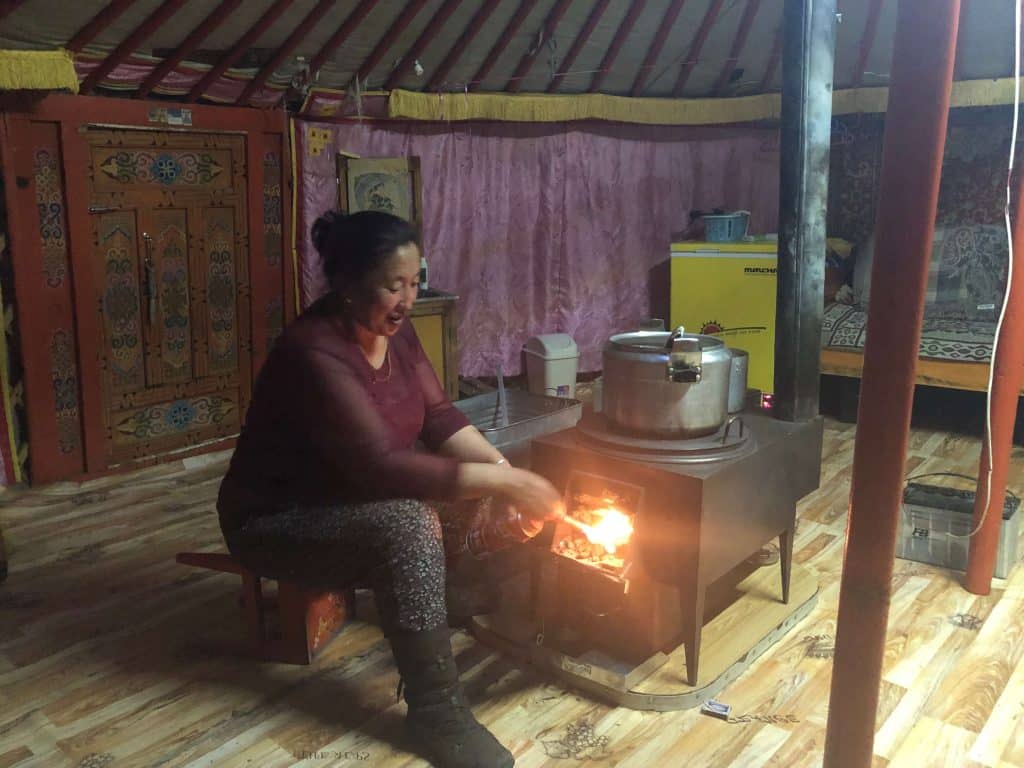
Cooking in a Ger: A Personal Experience
Living in a Ger provided me with a unique insight into the art of nomadic cooking. The Ger itself is a marvel of design—insulated and circular, it creates a cozy atmosphere that is perfect for family gatherings.
The central stove, often fueled by wood or coal, serves as both a cooking source and a heating element, making it the heart of the home.
The Rice Pudding Connection
One of the most delightful dishes I experienced during my stay was a kind of rice pudding that reminded me of what my Swedish mother used to serve at Christmas time. The rice pudding, while different in preparation, shared a comforting essence that connected my past with my present.
The recipe for this rice pudding was simple yet profound—rice, milk, sugar, and a hint of cinnamon and then some nuts and raisins.
It was a dish that transcended borders, echoing the flavors of my childhood while embodying the spirit of Mongolian hospitality. As we gathered around the table, sharing stories and laughter, I felt a deep connection to both my heritage and the rich traditions of my hosts.
Bread and Meat: The Heart of the Meal
Another highlight of my culinary journey was the variety of breads and meats prepared by my host family. The traditional Mongolian bread, often baked in a clay oven, had a crusty exterior and a soft, fluffy interior. Each bite was a testament to the skill and care that went into its preparation.
The meats, whether grilled or stewed, were seasoned with local herbs and spices, creating flavors that were bold yet balanced. I particularly enjoyed khuushuur, a fried meat pie that was crispy on the outside and juicy on the inside.
The communal aspect of sharing these meals further enriched the experience, as we bonded over the delicious food that nourished both body and soul.
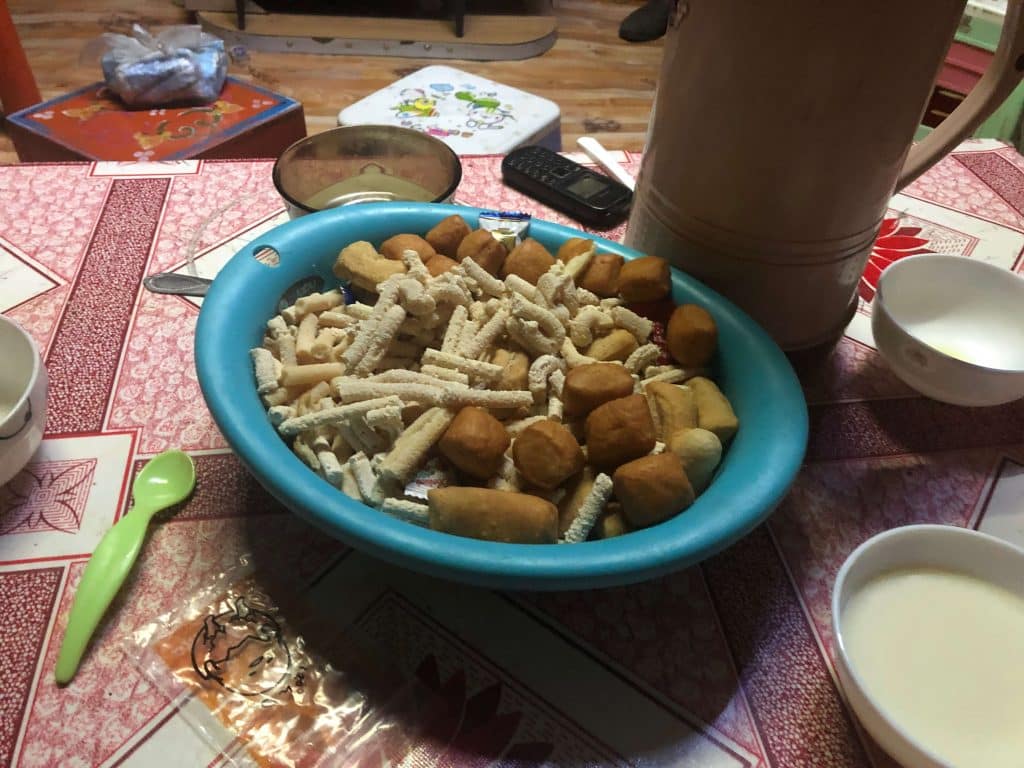
The Global Influence of Nomadic Cuisine
Nomadic cuisine is not confined to a single region; it has influenced and been influenced by various cultures around the world. As nomadic peoples traveled, they exchanged recipes, ingredients, and cooking techniques, creating a rich tapestry of culinary traditions.
The Silk Road: A Culinary Crossroads
The Silk Road, an ancient trade route connecting East and West, played a significant role in the dissemination of culinary practices. As merchants and travelers moved along this route, they brought with them spices, grains, and cooking methods that would shape the cuisines of various regions.
For instance, the introduction of spices from the Middle East to Central Asia transformed local dishes, adding layers of flavor that were previously unknown. Similarly, the Mongolian practice of cooking with fire and smoke influenced neighboring cultures, leading to the development of new techniques and flavors.
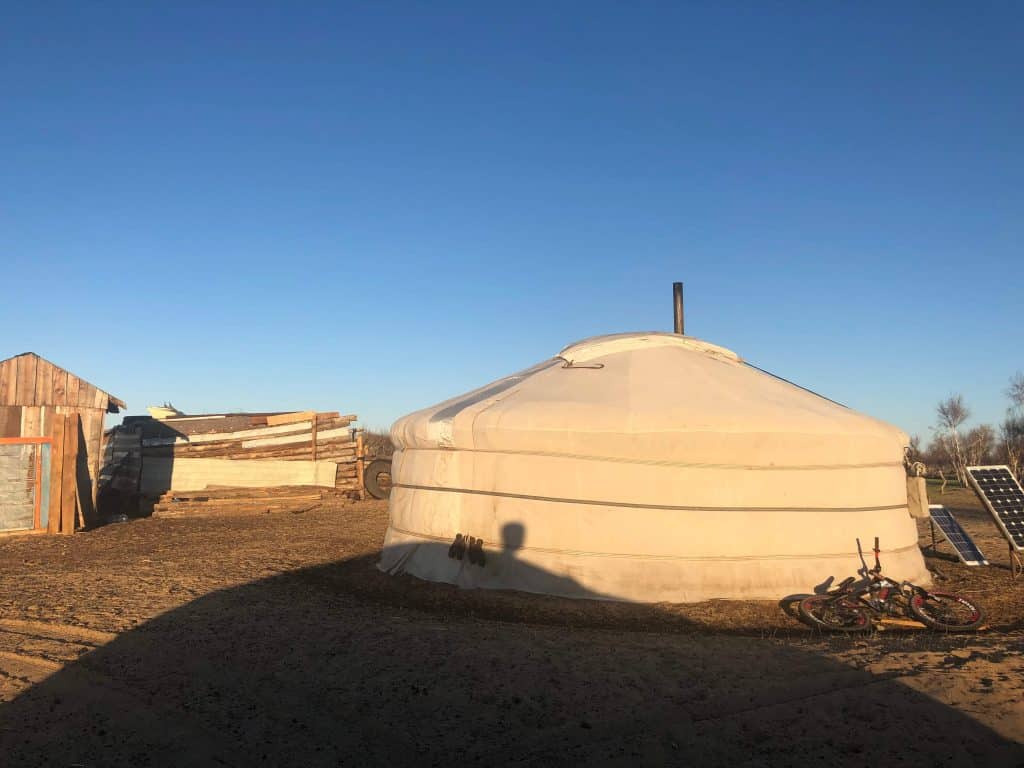
Modern Nomadic Influences
In today’s globalized world, the influence of nomadic cuisine can be seen in various culinary trends.
The rise of food trucks and pop-up restaurants echoes the spirit of nomadic cooking—flexible, innovative, and deeply connected to community. Chefs around the world are drawing inspiration from nomadic traditions, experimenting with flavors and techniques that celebrate the beauty of mobility.
The Resilience of Nomadic Cuisine
Nomadic cuisine is a testament to human resilience and adaptability. The ability to create nourishing and flavorful meals in the face of adversity speaks to the ingenuity of these cultures.
Sustainability and Resourcefulness
In an age where sustainability is paramount, nomadic cooking offers valuable lessons. The emphasis on using local ingredients, foraging, and preserving food aligns with contemporary movements towards sustainable eating.
By embracing these practices, we can honor the traditions of nomadic peoples while contributing to a more sustainable food system.
A Celebration of Community
At its core, nomadic cuisine is about community. The act of gathering around a fire, sharing stories, and enjoying a meal together is a universal experience that transcends borders.
In Mongolia, I witnessed how food brought families and friends together, fostering connections that were as nourishing as the meals themselves.
A Culinary Journey Worth Exploring
As we delve into the world of nomadic cuisine, we uncover a rich tapestry of flavors, traditions, and stories that have shaped human history. From the steppes of Mongolia to the deserts of the Middle East, the culinary practices of nomadic peoples reflect their resilience, ingenuity, and deep connection to the land.
My experience living in a Ger and sharing meals with my host family left an indelible mark on my culinary journey. The rice pudding, the breads, and the meats were more than just food; they were a celebration of culture, community, and the enduring spirit of humanity.
So, the next time you savor a dish that seems to tell a story, remember the nomads who traveled across continents, carrying their culinary traditions with them. Explore the flavors of the world, embrace the spirit of adventure, and celebrate the rich heritage of nomadic cuisine—a journey that is as flavorful as it is timeless.
Deep Dive Podcast
Listen to our Deep Dive Podcast
At A Bus On A Dusty Road, we discuss history, travel, life, sailing, and ex-pat living. We are all about “Living Life As A Global Citizen.” We explore social, cultural, and economic issues and travel.
We would love to have you be part of our community. Sign up for our newsletter to keep up-to-date by clicking here. If you have any questions, you can contact me, Anita, by clicking here.
Listen to our Podcast called Dusty Roads. You can find it on all major podcast platforms. Try out listening to one of our podcasts by clicking here.
Subscribe to our A Bus On A Dusty Road YouTube Channel filled with great videos and information.
Related Questions
Insiders Guide – 32 Tips for First-Time Travelers to Vietnam
Vietnam is a wonderful country. More and more people are beginning to discover Vietnam’s magnificent land and culture.
Vietnam is also a wonderful and exciting country to visit. For a first-time visitor to Vietnam, we have compiled 32 Vietnam travel tips for the first-time traveler to Vietnam. These 32 travel tips will help ensure you have the best trip possible. Our 32 travel tips to help you have the best trip possible.
You can discover more by reading Insiders Guide – 32 Tips for First-Time Travelers to Vietnam by clicking here.
Why You Need a Rabies Shot Before Traveling Southeast Asia
Travelers to Asia, and especially Southeast Asia, should be sure to get or ensure their rabies shots are up-to-date before they travel anywhere in southeast Asia. The reason is that rabies is still a common problem in many of these areas, and getting a shot may be difficult or almost impossible to obtain if you travel out in the countryside.
You can learn more by reading Why You Need a Rabies Shot Before Traveling Southeast Asia by clicking here.
Why Every Cyclist Should Ride Around Angkor Wat Cambodia?
Cycling around the Angkor Was Temple complexes is a great way to see some amazing ancient Cambodian temples. When you cycle around Angkor Wat, you will have the freedom to see Angkor Wat at your own pace and see things that you could never see in a car, bus, or even a tuk-tuk. Every cyclist should have cycled around Angkor Way on their bucket list.
By clicking here, you can discover Why Every Cyclist Should Ride Around Angkor Wat Cambodia?

